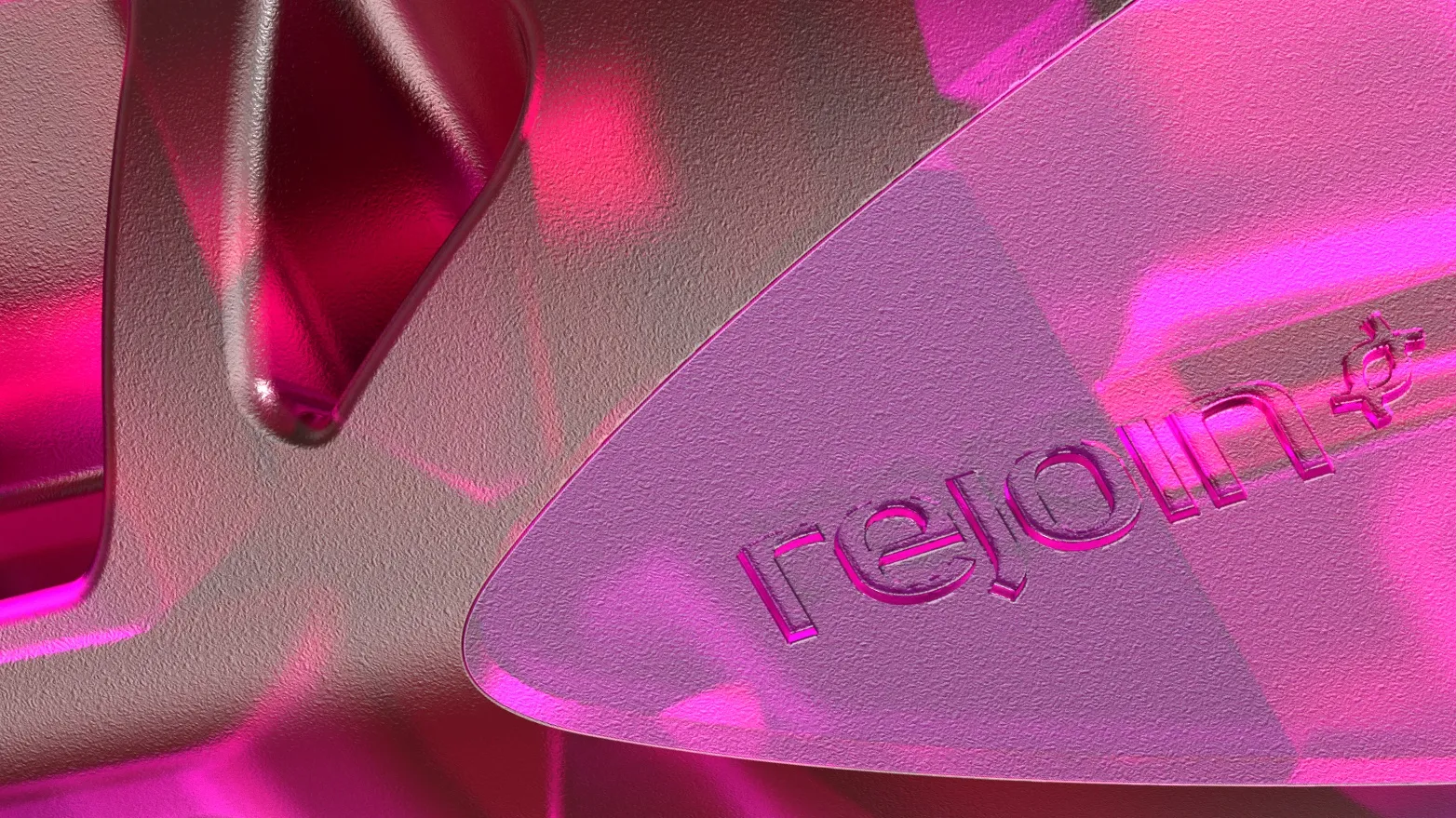Perspective
Infusion stand rethought: Ivy | Design Sprint 4
We all know them, but rarely question them: infusion stands. They are used to hang up infusion solutions. This usually includes liquids that restore a patient's salt or fluid content. In special cases, they can also be used to administer medication or artificial nutrition. Have you noticed any complications associated with these devices? University of Leeds product design student Orla Haigh has. After extensive research, she identified a number of problems for which she developed a very impressive solution during her internship at WILDDESIGN in Munich.

Orla's approach
Orla used workflows and a competitive analysis as research tools. This revealed a number of problems that were essential for optimal handling. From this, the student independently derived requirements for her area of expertise: product design. She developed concepts, tested them together with the Munich team and optimized them to the result shown here: Ivy.
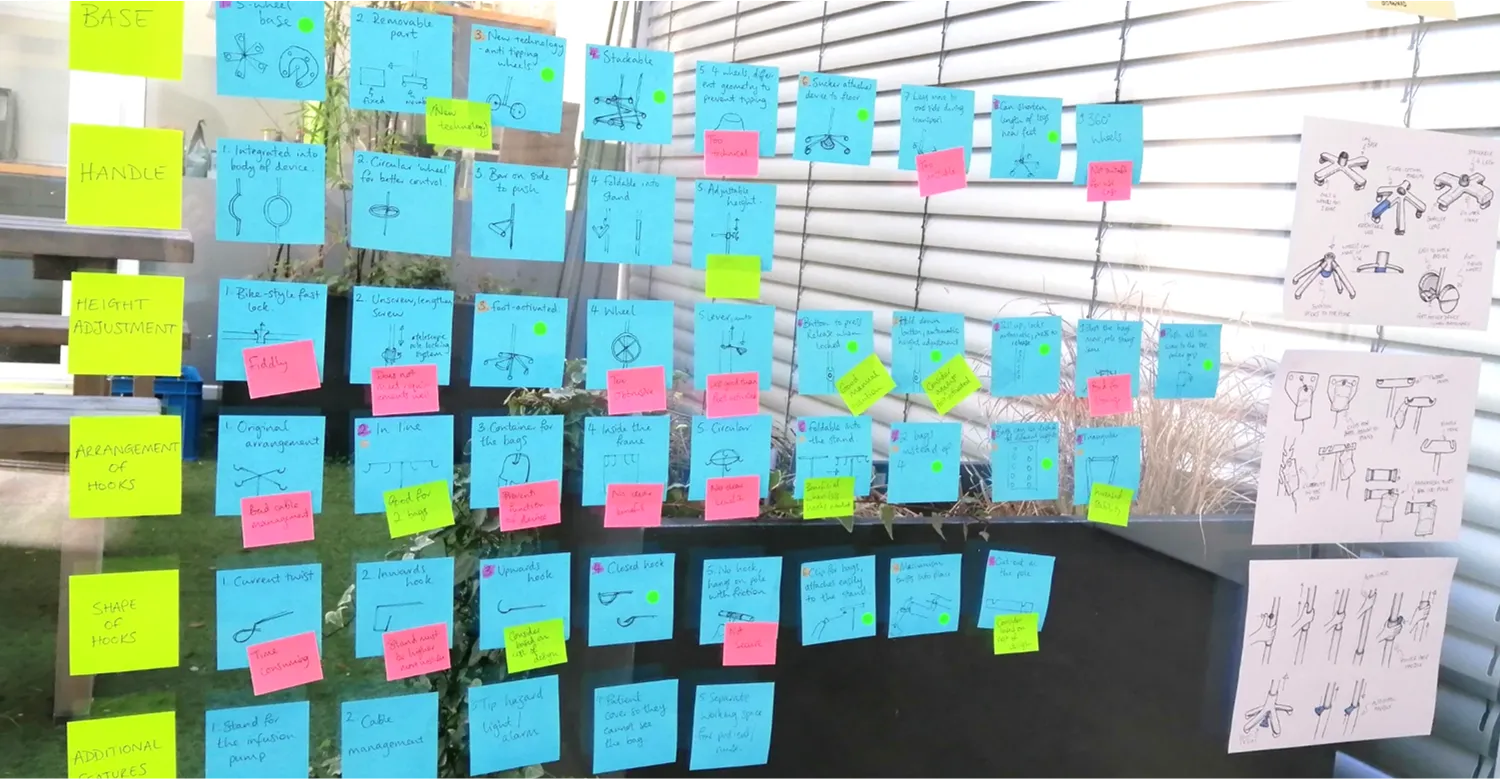
Need for optimization of infusion stands
A multitude of problems arose:
- Attaching devices (e.g. pumps) to the stand is usually done with one hand, as the second hand is needed to prevent the stand from rolling away. This often leads to shoulder and back problems.
- The base with castors and feet often does not fit under the hospital furniture and therefore takes up a lot of space.
- The stand usually stands on five castors, which can make it difficult to walk next to the frame without colliding with it.
- The unstable stands tip over easily.
- Lifting and attaching infusion bags can be hazardous to health as they are attached relatively high up on the stand.
- Infusion bags must be attached precisely to hooks. This is difficult when the column is extended.
- Hospital staff are often under time pressure. Fastening the bags is too complicated and therefore too time-consuming.
Details characterize the overall picture
Essential for the perception and later acceptance of an infusion stand are, in addition to simple and quick handling, the shape and its details. To demonstrate a range of solutions, Orla therefore developed various design concepts.
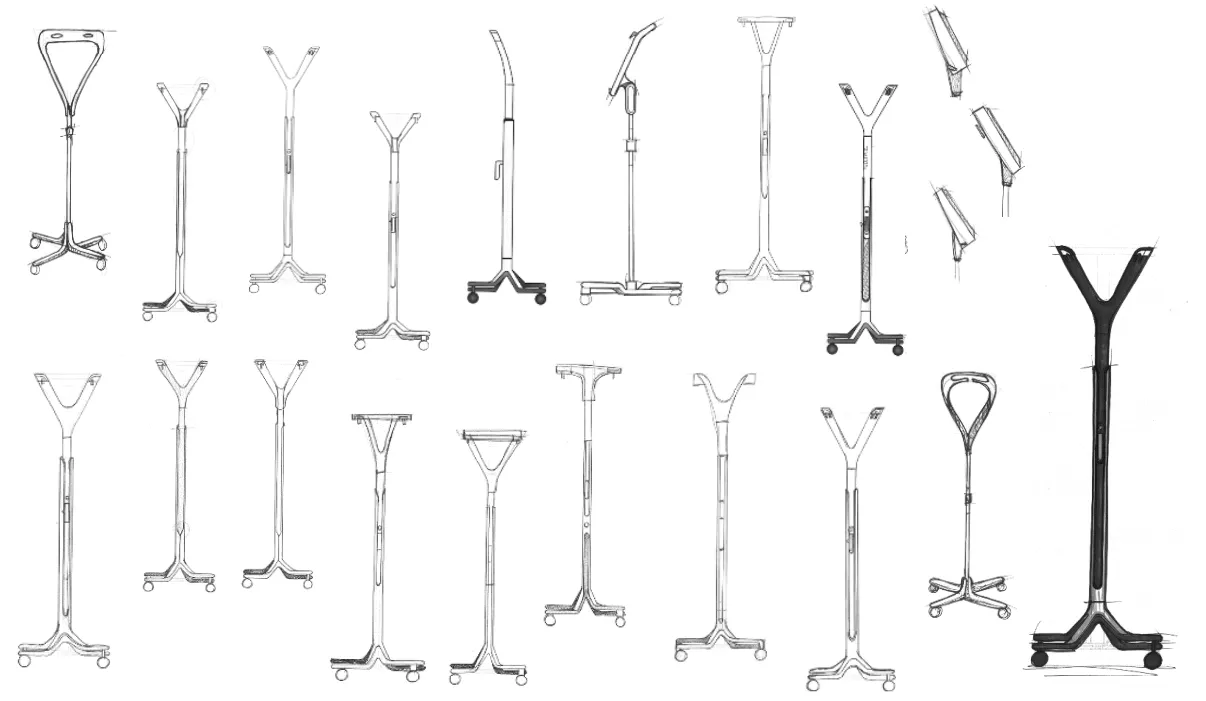
She focused on a model with a Y-shape, the upper section of which is tilted forwards. It has a hook at both upper ends so that two infusion bags can be attached at the same time. The bags can simply be hung over the hooks without the need for precise handling. The bags are secured by Quick-Lock systems on the hooks.

Another component of the infusion stand: the pump attachment. The flow rate of the infusion can be set on a pump. When the set volume and the set time have elapsed, the pumps emit an acoustic signal. The pump connected to the infusion bag can be placed on the column holder.

A hand lever is located at the same height, but on the other side of the stand. It is used for easy height adjustment in three simple steps: fold the lever up, pull it up or down to adjust and fold the lever down again. There is also a button to unlock the lever.

The base consists of four feet, each with a castor. Thanks to their flat tapered shape, the uprights can be overlapped in the warehouse and therefore take up less space. The base is therefore not only stackable, but can also be easily slid under furniture.
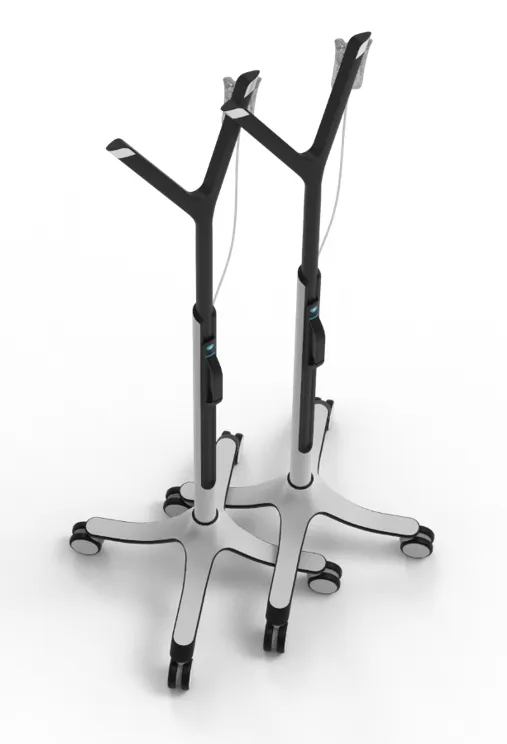
Away from clinical white and polished stainless steel: the design moves away from this typical appearance of infusion stands thanks to a new mix of materials. A mixture of matt black with white and turquoise accents creates a refreshingly modern design. A very contemporary overall look that matches the product environment.
Mobile and stationary application
The design had to meet two main application areas: the location next to the patient's bed and mobile use in the corridors.
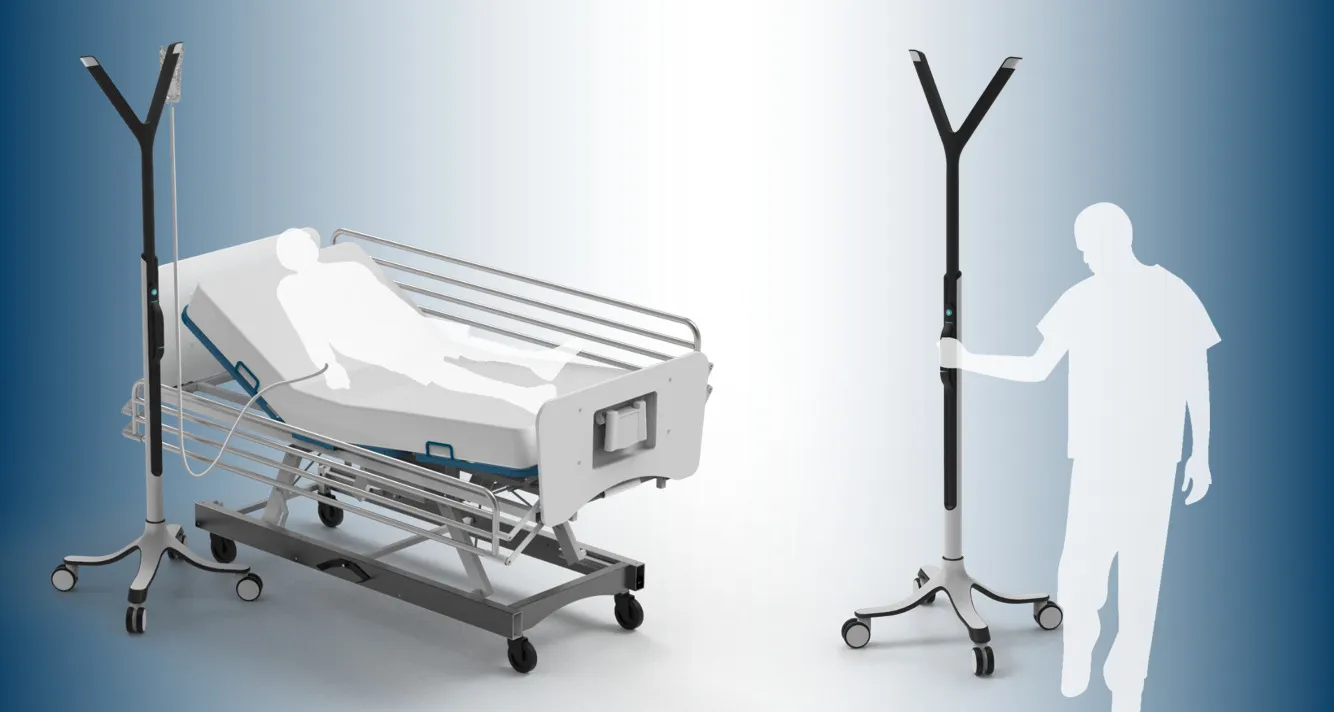
As nurses are the main users of the infusion stands, they are the most important target group for potential product improvements alongside patients. In addition to the low base, there is another plus point: the column can be raised up to 1 m above the infusion on the patient so that tubes and bags are less of a hindrance.
Mobility in the corridors is massively improved by the Ivy infusion stand: four instead of the conventional five feet reduce the risk of tripping and ensure that the base is easier to pull. To ensure that the stand is stable despite fewer castors, the number of bags on the hooks has also been reduced from four to two infusions. The bent upper part of the stand prevents the infusion bags from swinging against the pole. Another advantage: more distance from the stand when walking. Thanks to the large, protruding hand lever, the stand can be pushed further away from the user's own feet.
The optimizations at a glance
Orla's final concept solves some of the problems identified: the storage problem of the stands; the overload in the shoulder area that occurs when attaching or detaching infusion bags; the complicated height adjustment and the difficulties of mobile use in hospital corridors. Ivy's design features can be divided into three categories: the hooks, the height adjustment and the base.
Hooks:
✔ the infusion bags hang at least 1 m above the infusion at the patient's bedside
✔ more than one bag can be attached to the hooks
✔ quick hanging of the bags thanks to the quick-lock hooks
✔ reduced risk of the bags falling
✔ reduced strain on the shoulder and neck area
Height adjustment:
✔ Only minimal force required for height adjustment thanks to the ergonomic hand lever
✔ Quick height adjustment thanks to the simple unlocking system
✔ Easy control of the frame during transport using the hand lever
✔ Pump attachment on the other side of the lever
Base:
✔ the wide and deep design of the base ensures a stable frame
✔ 4 instead of 5 castors are less in the way during transportation
✔ less space is needed for storage as the base is stackable
✔ less space needed in the hospital room as the low base can be pushed under hospital furniture
✔ outside and on bumpy floors, transportation and especially pushing is easier as only 4 wheels are installed
One design for three criteria: Function, comfort and aesthetics
The Ivy infusion stand challenges conventional models of infusion stands and offers solutions to some of the problems that arise during or before use. The optimizations focus on space reduction during use in the patient room or in storage and comfort for patients, nurses and caregivers.
Most infusion stands focus on functional aspects - comfort and aesthetics are neglected. Ivy combines these elements and impressively underlines the potential of good product design.
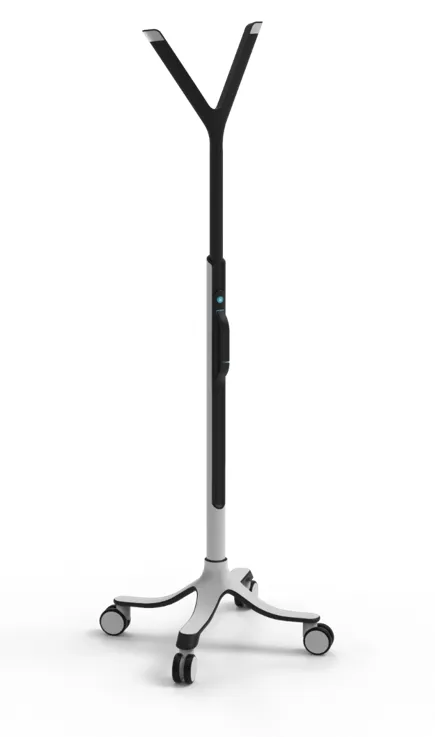
Many thanks to Orla for a very inspiring design!
If you like this concept or individual aspects of it, or if you think we should work on it further, please just let us know. We look forward to your feedback at vordenker-projekte@wilddesign.de
Frequently asked questions



